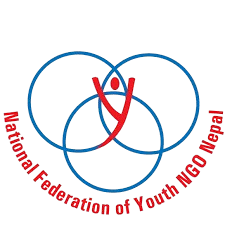
Kathmandu brings air quality into focus with first citywide air quality monitoring network
KMC officially unveiled the Kathmandu Metropolitan Air Quality Monitoring Dashboard on World Environment Day (June 5, 2025), with an initial network of 18 Clarity air quality sensors.
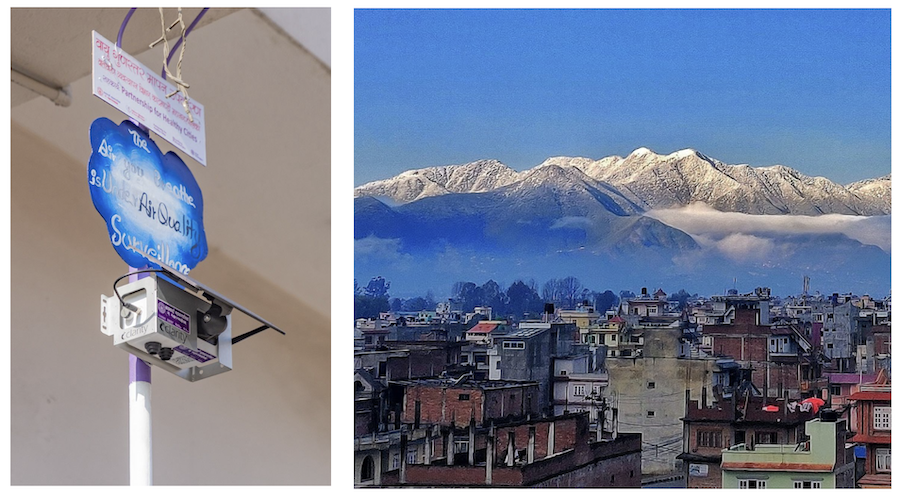
Kathmandu confronts its air pollution challenge
Kathmandu, the bustling capital of Nepal, has long struggled with severe air pollution. Rapid urbanization, dense traffic, and the valley’s bowl-like geography trap harmful air pollutants over the city – especially during the dry winter months. A common local saying captures the past attitude: “वर्षासँगै प्रदूषण बिर्स्यौँ” – “we forget pollution with the rain.” Each monsoon would briefly clear the skies, and with it, public attention to air quality would fade. But in 2025, city leaders decided to rewrite that narrative by investing in continuous, year-round monitoring of Kathmandu’s air, aligned with the city’s commitment to improve urban health as part of the global Partnership for Healthy Cities network.

Recognizing the health emergency posed by pollution, Kathmandu Metropolitan City (KMC) introduced its own Pollution Control Standards for the first time in 2024. Aligned with Nepal’s federal guidelines, the 2024 Kathmandu Metropolitan City Pollution Control Standards set strict limits on vehicle emissions, industrial exhaust, and ambient particulate matter levels. These new rules marked a milestone – but to enforce them effectively, the city needed accurate, local, real-time data on air quality. Kathmandu needed to measure air pollution in real time if it hoped to manage it.
Launching the network: real-time data for health and decision-making
KMC officially unveiled the Kathmandu Metropolitan Air Quality Monitoring Dashboard on World Environment Day (June 5, 2025) as part of its work in the global Partnership for Healthy Cities network, a prestigious global network of 74 cities committed to saving lives by preventing noncommunicable diseases—such as heart disease, diabetes, and cancer—and injuries. Kathmandu set up an initial network of 18 monitoring stations. Clarity Movement Co. provided its Node‑S sensors for the network, making this Kathmandu’s first city-run air monitoring system in history.
The city installed 18 solar-powered Clarity Node-S air pollution sensors at high-priority locations – hospitals, schools, busy intersections, ward offices, and transport hubs. These low-cost air pollution monitors now track fine particulate (PM₂.₅) levels at Chhetrapati Hospital, Kalanki Chowk, Balaju Baishdhara Park, Paropakar Women’s Hospital (Thapathali), Lainchaur, Teku Transfer Station, the New Bus Park police office, and over a dozen other community sites.

These air quality measurement devices transmit data to KMC’s custom online dashboard (accessible via the city’s website) that updates air quality readings continuously across Kathmandu’s neighborhoods. The dashboard translates raw data into an easy six-color Air Quality Index (AQI) map. Green indicates good air, yellow means moderate, orange warns that sensitive groups (children, the elderly, people with heart or lung conditions) should take precautions, and red denotes unhealthy air for everyone. At the worst levels, purple flags very unhealthy air, and dark brown signals hazardous pollution that can affect the entire population. This clear color-coding lets residents instantly gauge the health risk in their area and adapt their activities accordingly.
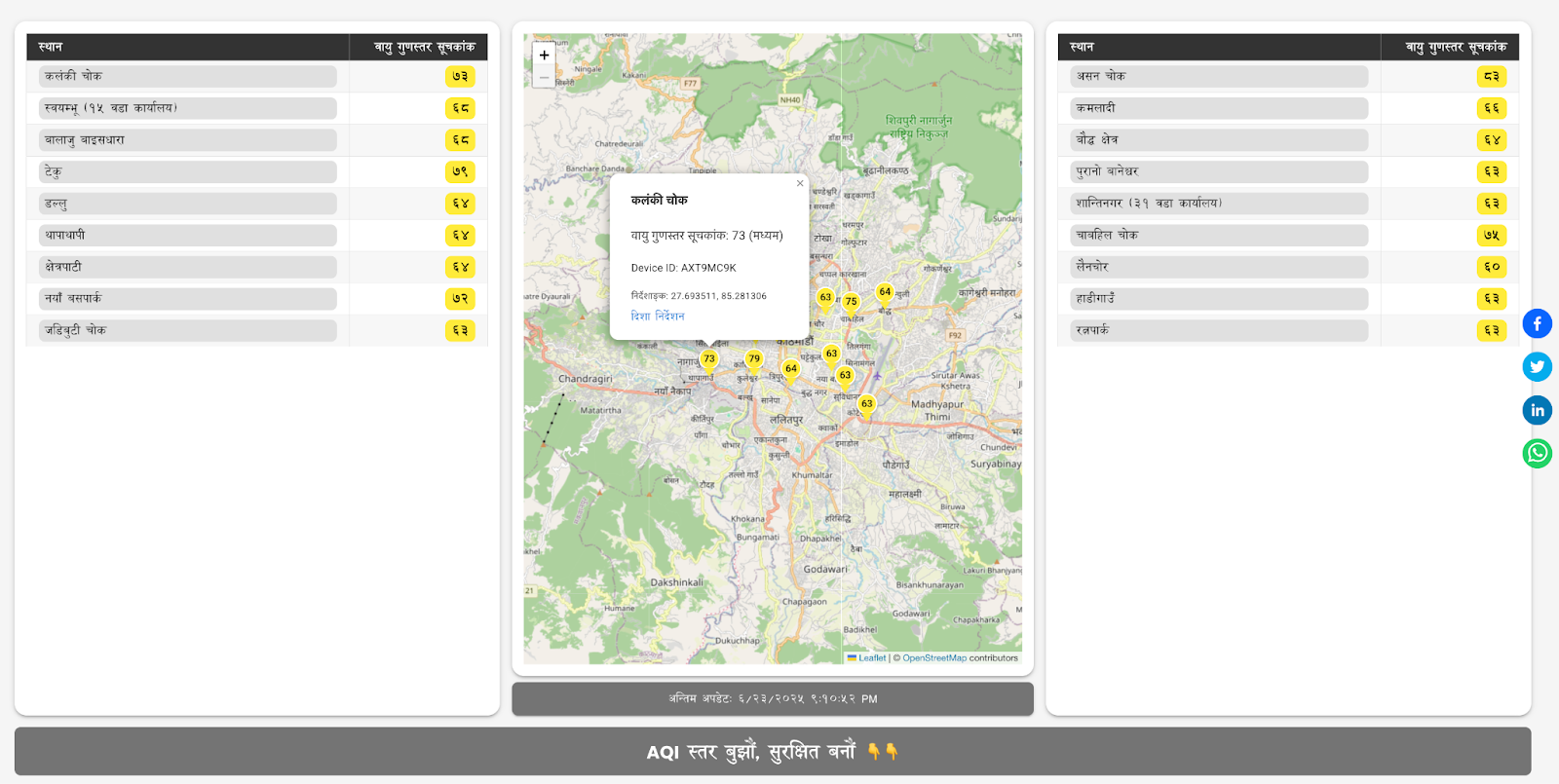
The dashboard isn’t just for scientists – it’s designed as a public health tool. It’s more than just a data portal; it’s a platform for awareness and accountability. City officials emphasize that real-time air quality monitoring is the foundation for action. By knowing when and where pollution spikes, Kathmandu can issue timely health advisories, enforce regulations, and plan smarter policies to protect its people.
Air quality won’t change overnight, but this first-of-its-kind network is a historic step for Kathmandu. There could be no better way to celebrate World Environment Day than by turning data into action. With consistent, collaborative effort from government, the private sector, civil society, and each of us as citizens, we can transform this data into meaningful change for a cleaner, healthier city.”
— Sanjeeb Pandey, Project Lead, Partnership for Healthy Cities – Kathmandu
From data to action: driving policy, education, and civic engagement
Kathmandu is already putting the new data to work. The city’s Health Department analyzes the dashboard’s live readings to inform policy development – from crafting clean-air action plans to budgeting for pollution control measures.
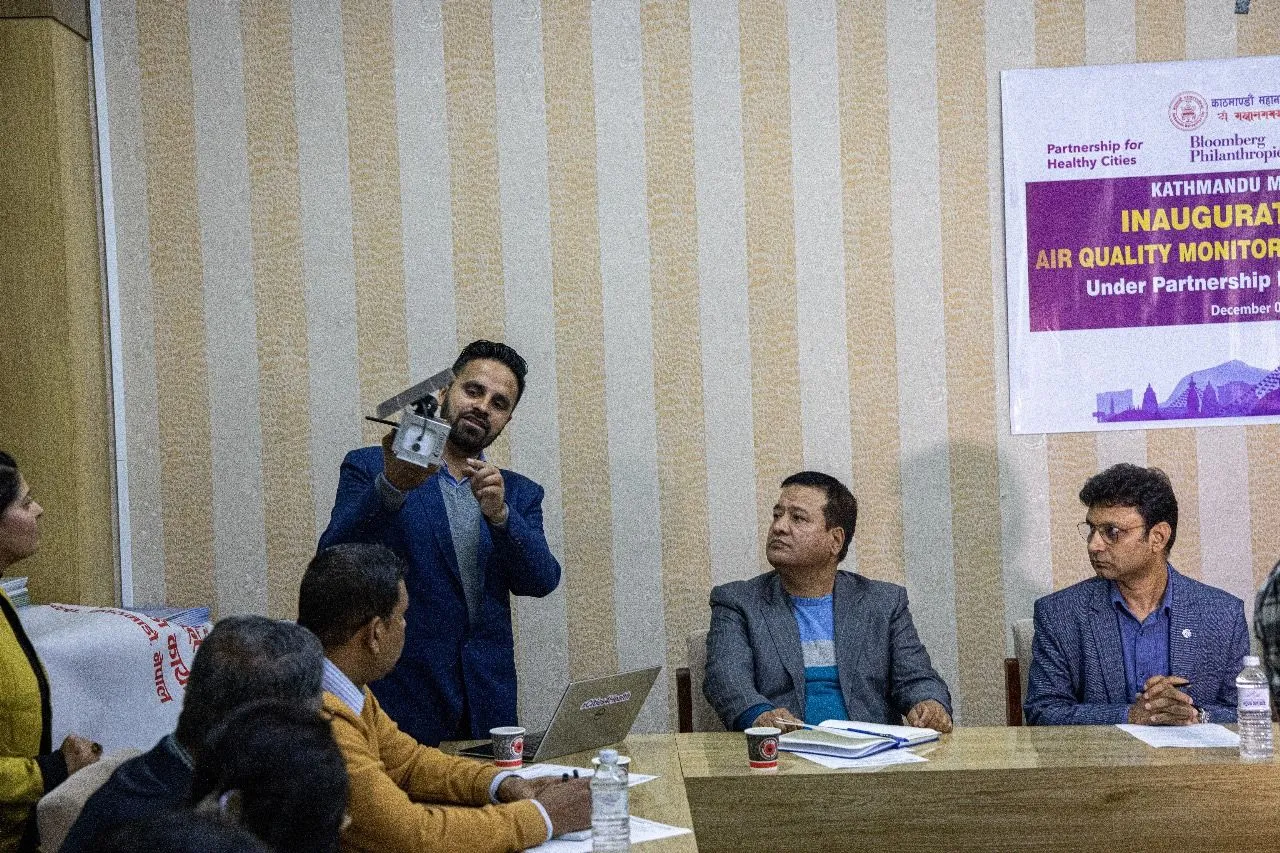
The air quality data provided by the Dashboard will serve as a foundation for designing policies, allocating budgets, and developing programs to address urban public health challenges.”
— Deepak Kumar KC, Head of KMC’s Health Department
In practical terms, this means air quality data are now part of every health meeting and urban planning discussion, ensuring pollution stays at the forefront of decision-making year-round.
Other departments are also integrating the sensor network into their daily operations. For instance, Kathmandu’s Environment Department plans to install color-coded health advisory boards around the city, mirroring the dashboard’s AQI colors to alert people on the street about current conditions.
The city is even using the online platform to broadcast educational videos about air pollution and to publicize progress on vehicle emissions testing. Meanwhile, the Transportation Division has begun enforcing new vehicle emission standards (as outlined in the 2024 Pollution Control Standards) and is leveraging hotspot data from the sensors to target the most polluted zones for traffic restrictions and inspections. This kind of multi-agency coordination – health, environment, traffic, education – ensures the sensor data doesn’t sit in a silo. The numbers are actively shaping decisions, not just being displayed.
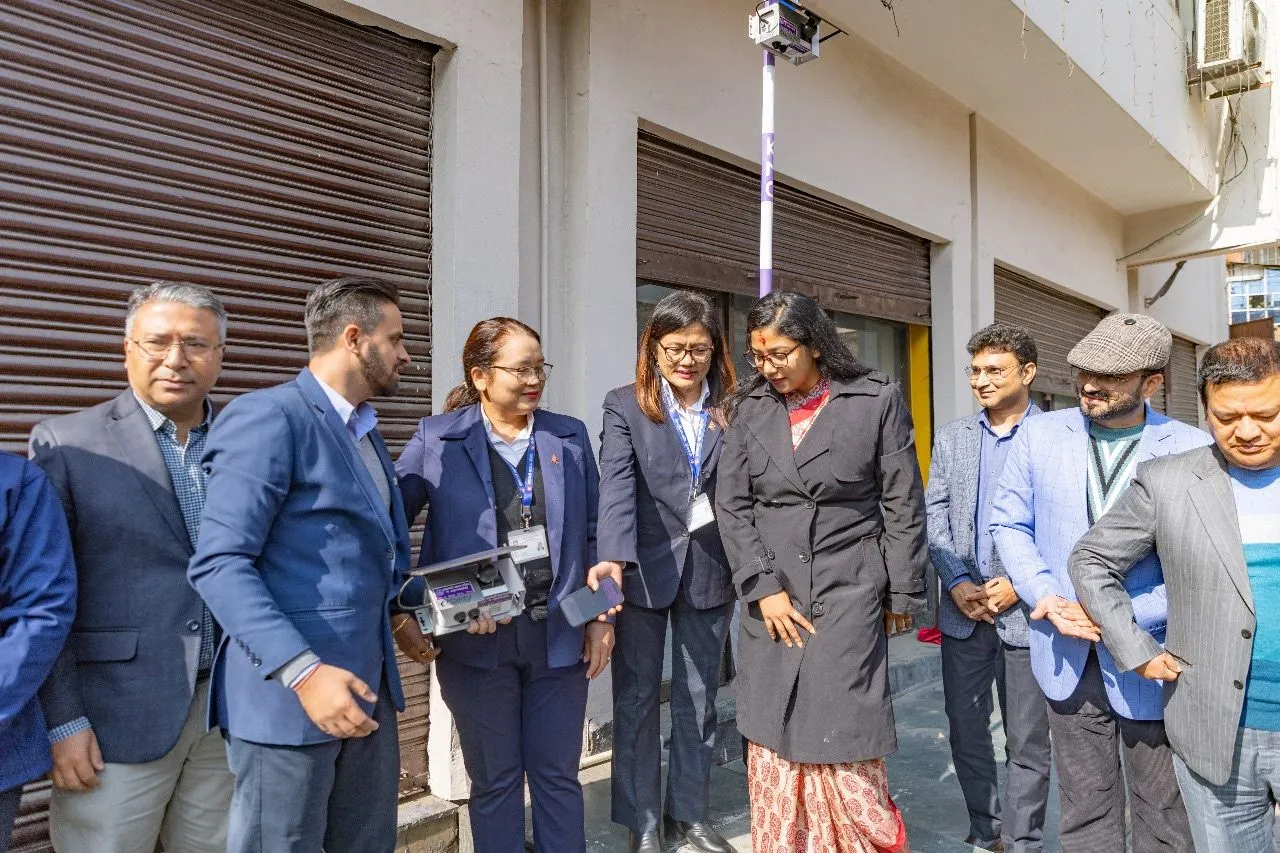
Perhaps most importantly, Kathmandu’s residents are now participants in pollution management. Parents can check if air quality around schools is safe for outdoor play. Athletes can decide the best time for a run. And vulnerable groups can take precautions on hazardous days. By making air quality information public and hyperlocal, the city is empowering citizens to protect themselves and also to support needed pollution-control measures.
From global partnership to local movement
Kathmandu’s leap forward is part of a global movement of local governments working together to create healthier, safer cities. KMC is one of 74 cities in the Partnership for Healthy Cities network—a global initiative supported by Bloomberg Philanthropies in partnership with the World Health Organization and global health organization Vital Strategies. Through this program, Kathmandu received funding, technical assistance, and communication resources to tackle air pollution head-on. Implementation on the ground was led by a local nonprofit partner, the National Federation of Youth NGOs Nepal (NFYN), ensuring that the project was rooted in community engagement from day one.
This collaboration across international experts, city officials, and local civil society is summed up in the campaign’s hashtag: #LetKathmanduBreathe. More than a slogan, Let Kathmandu Breathe is a call for citizens to share their stories and solutions for cleaner air.
From students planting trees to volunteers distributing masks during high-AQI days, a grassroots movement is growing alongside the new monitoring network. Social media challenges and community events invite everyone to be part of the solution. By combining top-down policy with bottom-up action, Kathmandu is forging a new model of environmental governance – one where data and people together drive change.
For the first time, Kathmandu has a city-run air quality network that not only measures pollution but also mobilizes our community to demand cleaner air. NFYN is proud to help connect youth, civil society, and the city government through this partnership. Together, we’re empowering citizens to safeguard their health and holding ourselves accountable for Kathmandu’s air. This is how we build a cleaner and healthier future for everyone.”
— Shashi Sharma Majgainya, Central President, National Federation of Youth NGOs Nepal (NFYN)
What’s next for Kathmandu’s clean air initiative
The successful rollout of 18 sensors is just the beginning. Buoyed by early positive feedback, Kathmandu’s leaders plan to expand and enhance the air monitoring program in the coming years. Several key next steps are on the horizon:
- Wider Coverage: KMC aims to install additional Node-S sensors to cover more wards and neighboring urban areas, ensuring no neighborhood’s air goes unnoticed. The goal is a truly citywide (and eventually valley-wide) network of monitors.
- More Pollutants: Today’s system tracks PM₂.₅ – the fine particles most harmful to health. The city is exploring adding Multi-Gas Modules to measure gaseous air pollutants like nitrogen dioxide (NO₂), ozone (O₃), nitrogen oxides (NOx) and carbon monoxide (CO) for traffic and smog pollution, so the dashboard can give a fuller picture of air quality.
- Historical Trends: Upcoming dashboard updates will introduce data logging and analytics, allowing officials and the public to view historical air quality trends. This will help evaluate policies over time – for example, roadside vehicle emission test campaigns to help determine new traffic rules reduced vehicular emissions – and adjust strategies accordingly.
- Alert Systems: Kathmandu plans to integrate the air quality data with emergency response and public warning systems. In the future, if pollution reaches hazardous levels, automated alerts could trigger health warnings via SMS, push notifications, or even school closure advisories to protect students on bad-air days. The alert system will feature the upcoming health emergency guidelines for air pollution of National Disaster Risk Reduction and Management Authority (NDRRMA).
- Policy Integration: The city is looking at ways to incorporate sensor data into long-term urban planning. This might include zoning decisions (e.g. where schools or hospitals are sited), greening programs (identifying areas in need of trees or green buffers), and climate resilience planning (since air pollution and climate factors are interlinked in Kathmandu).
A model of clean air action for other cities in the region
Kathmandu’s proactive approach – combining reliable technology, strategic partnerships, and transparent communication – demonstrates how cities can turn environmental monitoring into actionable public health infrastructure. By launching Nepal’s first municipal air quality network and openly sharing its data, Kathmandu is bridging the gap between awareness and action.
Every resident of Kathmandu is now an inspector—and an advocate—for clean air.”
— Sarita Rai, Head of Environment Department, KMC
Early indications of success have not gone unnoticed. Other municipalities in Nepal and across South Asia are already watching Kathmandu’s example closely. City delegations have inquired about adopting similar low-cost sensor networks to tackle their own pollution problems.
With support from Clarity’s global team and local partners, Kathmandu is helping prove what’s possible when data is made public, local voices are empowered, and health takes center stage. The city has shown that even in a challenging context, a committed local government can leap into the 21st century of air quality management – and inspire others to do the same.
Kathmandu’s journey to clean air is far from over, but its first steps are charting a hopeful path forward for cities everywhere that are motivated to improve the quality of the air they breathe.
